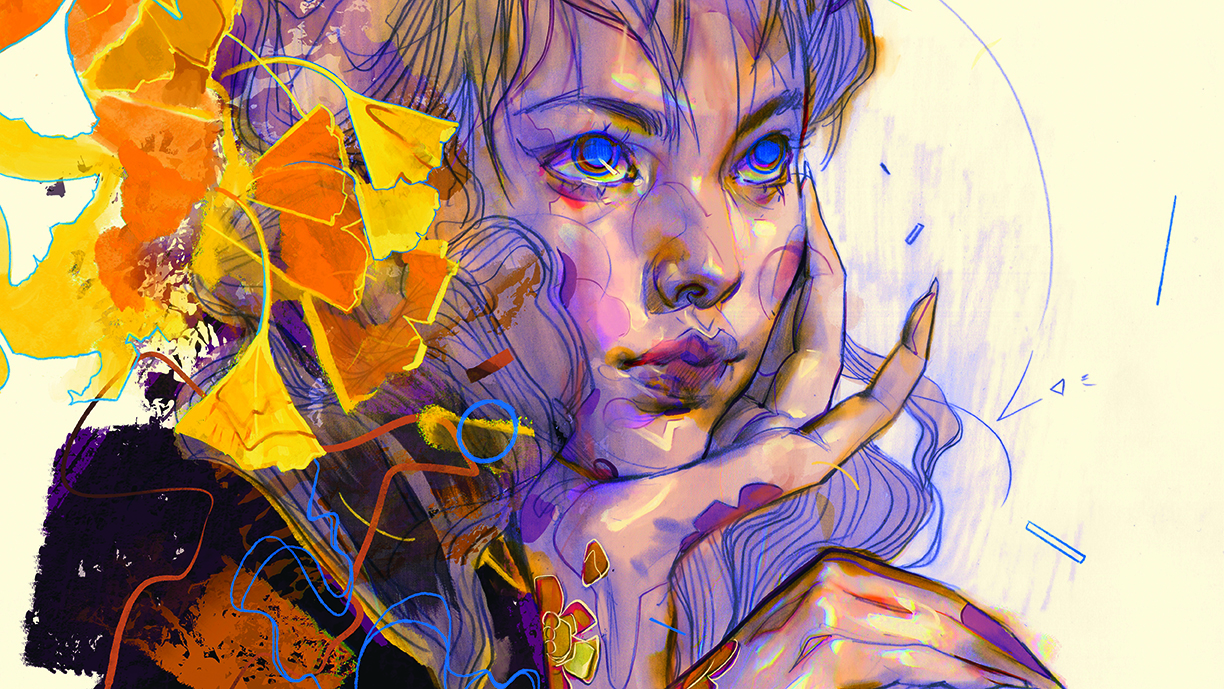
"It's important to keep in mind that your basic setup is key to lining up for success from the beginning; the things I look out for are scanning resolution (I use 600DPI or more), and selecting brush packs that contain brushes close to the ones used in the original piece."
"Zoom in and address small notes as if with a magnifying glass, as digital screens can be deceptive when zoomed out. Pay extra attention to details on the face, because any subtle additions will drive the viewer's eye right to that focal point."
"Make sure the lighting is punchy but without fighting the original lighting of the pencil sketch. The tattooed flower outlines in my piece weren't working, so I used an eggshell white ink brush to invert the lines and turn them into gilded jewellery."
A successful digital coloring process relies on preserving the original drawing's integrity while using appropriate tools and techniques. Start with a high scanning resolution of 600DPI or greater and select brush packs that replicate the original artwork. Attention to detail is crucial, particularly when enhancing focal points like faces. Subtle changes, such as adjusting lighting or altering outlines, can significantly impact the visual appeal, ensuring that the final piece maintains a harmonious blend of traditional and digital elements.
Read at Creative Bloq
Unable to calculate read time
Collection
[
|
...
]